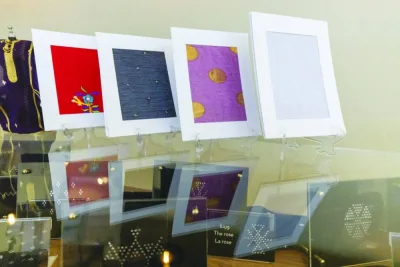Qatar Museums (QM) Archaeology Department Director Faisal al-Naimi said QM’s new and continuous archaeologist finds aim to learn about Qatar’s old geography and help in understanding Qatar’s history.
Speaking to Qatar News Agency, al-Naimi said QM’s exploration efforts will continue after the summer using specialised scientific teams from inside and outside Qatar in order to explore well-known archaeological sites in the country.
QM is currently preparing for new seasons so as to agree on scientific research points, he added, noting that it is in contact with competent scientific entities for launching new research projects.
Al-Naimi said that one of the most important sites for exploration is Umm Al-Ma’ Al-Yaghbi, which is close to Murwab area and dates back to the Abbasid period.
The area is not coastal and has some 200 housing units, constructed in groups, a palatial residence, workshops and two mosques.
Excavations have also revealed a group of tombs scattered around the groups of houses.
Excavations are being carried out in these areas, as well as further excavations in the historic area of Fuwayrat, located in the northeast of Qatar, he added.
Al-Naimi said the archaeology department pays special attention to antiquities which are excavated under Qatari waters in order to learn about the history of the Qatar peninsula, the human’s relation with water and the nature of water.
He said that 18,000 years ago the peninsula did not exist.
As a result of global warming, he noted, the water level rose and the gulf was formed, with the map of Qatar emerging as a result.
According to specialised studies, the water level has risen again throughout history, creating fossilised beaches of Qatar, which provides an idea of the old climate, land’s nature and the formation of Qatar’s map.
Al-Naimi said not all excavation results have been fully announced as some of the pieces discovered are in European laboratories to thoroughly determine their history.
With regards to corresponding the continuous excavations in Qatar with the urban development taking place and the role of the Archaeology Department, al-Naimi said this is currently taking place.
He referred to Hamad Port as an example as it extends over a 15km-long area close to Umm Al Houl historical site which was maintained despite the major economic project.
Another example he used is Jazirat Bin Ghannam which was specially highlighted by the Danish excavation mission followed by the French, then the British in co-operation with QM team in 2000.
Excavations have revealed a midden (shell heap) containing the remains of around 2.9mn individual crushed shells of sea snail.
Before a project is initiated QM is contacted to study the means of maintaining historical sites in order to implement the project, he added.
On the efforts of QM in introducing the discovered archaeological sites, the Archeology Department director said the museum has plans for sites and permanent activities to identify archaeological sites, especially Zubarah site, which is registered on Unesco World Heritage List, where educational activities are held during the winter season.
He added that activities for the past year have included specialised educational workshops in Qatar on how to produce the purple dye of sea snails, where the industry of purple dye is known in Ben Ghannam island dating back to more than 3,500 years.
He said that it is located on the east coast of Qatar in a protected location in Khor Al Shaqiq, noting that the workshops have been very popular because they have a direct relationship to Qatari history.
He stressed that QM seeks not only to preserve monuments but also to educate about the Qatari history.



